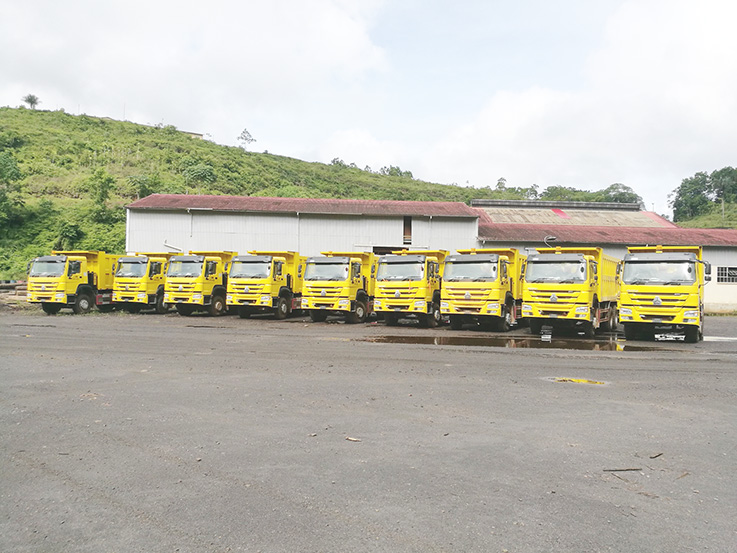After more than five decades, Guyana is once again preparing to export manganese as the Chinese-owned Guyana Manganese Inc (GMI), is currently loading ships in Region One with the ore for export.
“Right now, as we speak, vessels are being loaded in the North West of Guyana with Guyana’s first shipment of manganese in 54 years,” Senior Minister in the Office of the President with Responsibility for Finance Dr Ashni Singh announced yesterday as he delivered the feature address at the Private Sector Commission’s Annual General Meeting.
This newspaper understands that the first shipment amounts to some 33,000 metric tonnes. No information was released on the price.
GMI had its Environmental Impact Assessment (EIA) for the Region One project approved by the Environmental Protection Agency (EPA) in May of this year.
The mine was closed in March of 2019 when workers carrying out scoping works took ill and two – 47-year-old Zhenglong Zong, and 45-year-old Zengguo Ji, both Chinese nationals – subsequently died from what the company said was leptospirosis and respiratory failure.
After the two workers succumbed, the Chinese government made a request for the 10 sick workers – all Chinese nationals – to be flown back home for medical attention. This request was granted and the men were flown back to their home country.
Then last year September, the company’s operations were stalled after a section of the reservoir belonging to GMI collapsed, releasing a torrent of water that washed away a section of the road which connects Matthews Ridge to Port Kaituma and flooded surrounding areas.
Region One Chairman Brentnol Ashley said that a compromised drainage system was suspected to be the primary cause of the collapse. He added that from all indications, the company did not change drainage pipes that were laid years ago. The integrity of the pipes, he opined, was believed to have been compromised by the volume of water in the reservoir.
The collapse of the reservoir had raised questions about GMI’s safety practices.
No update on penalties to the company has been made public.
But GMI’s problems did not end there. In February of this year the Ministry of Labour began a probe into the allegedly terrible working conditions of employees at the company.
The issue was brought to light by a Guyana Agricultural and General Workers Union. In a statement GAWU had said “proper sanitation is absent and despite their repeated pleas, it appeared to them, the company was not prepared to meaningfully address the situation… They also lamented the physical condition of the housing facilities which they said required urgent repairs and rehabilitation to bring it to an acceptable level.” It was noted that workers, who were not named in the statement for fear of victimization, lamented they had to work in deteriorating conditions during the COVID-19 pandemic in which sanitation was of greater importance.
It is unclear what was the outcome of that probe.
Meanwhile, the Finance Minister announced that three large-scale gold mining operations will be setting up soon.
“Multiple international companies are actively engaged in various stages of development of world class, large scale gold mining operations in at least three very promising developments across the country that could see gold mines, each of which will be bigger than Omai,” Singh said.
“You know how significant Omai was. Contemplate for a moment three large scale operations, each of which is larger than Omai. Consider for a moment that each one of these will be employing more than 1,000 Guyanese. Consider the food and other supplies, transport services, construction, equipment supply and maintenance services and all the multiplier benefit these operations will generate,” he added
He did not name the locations or the companies which will be operating the mines but noted that some of them are quoted on international stock exchanges.
The same sentiments had been expressed by the previous government of two other large-scale gold miners: Troy Resources Inc and Guyana Goldfields. The former is currently shut while the latter changed owners after difficult conditions were encountered. Moreover, the Omai gold deal yielded no corporation tax for the country over its lifetime and the major benefits were job creation, purchase of services and royalties. The largest environmental disaster in the country’s history was also attributable to Omai when one of its tailings dams collapsed.
GMI purchased four prospecting licences that cover an area of 45,729 acres, exploration results, certain properties and infrastructure from Reunion Manganese Inc of Canada in November 2016.
Critics have said this deal falls classically into the mould of Guyanese natural resources being exported for a pittance whereas there could be value-added investment.




